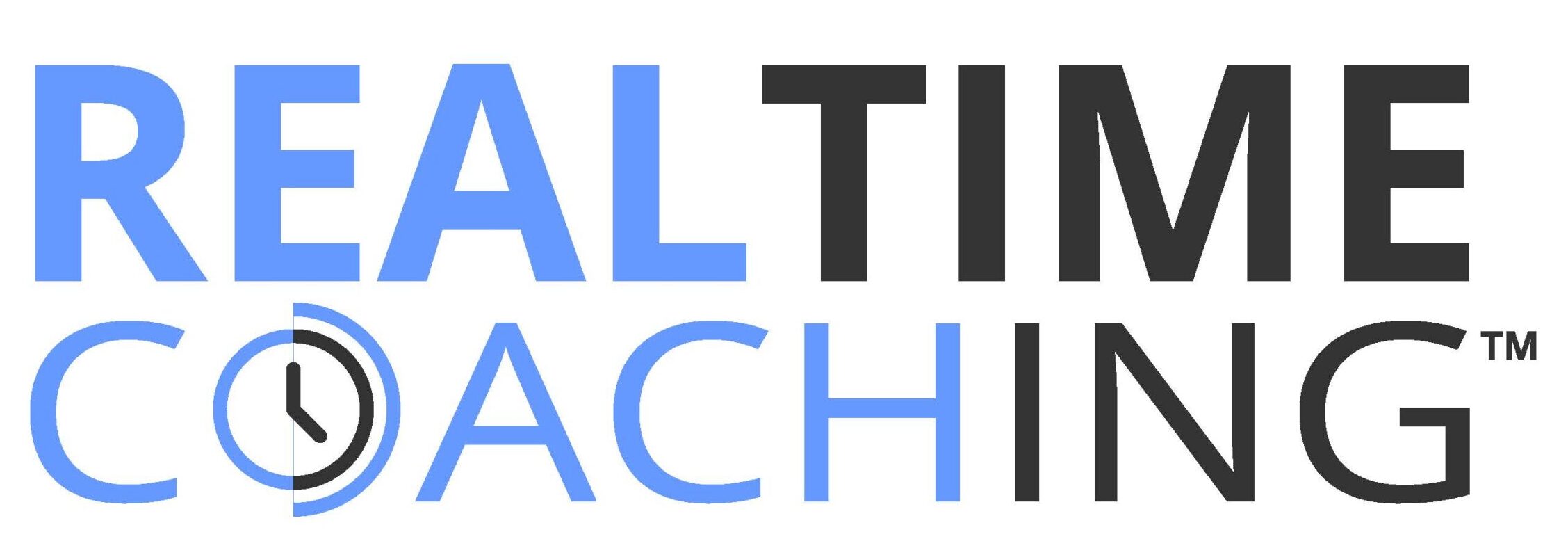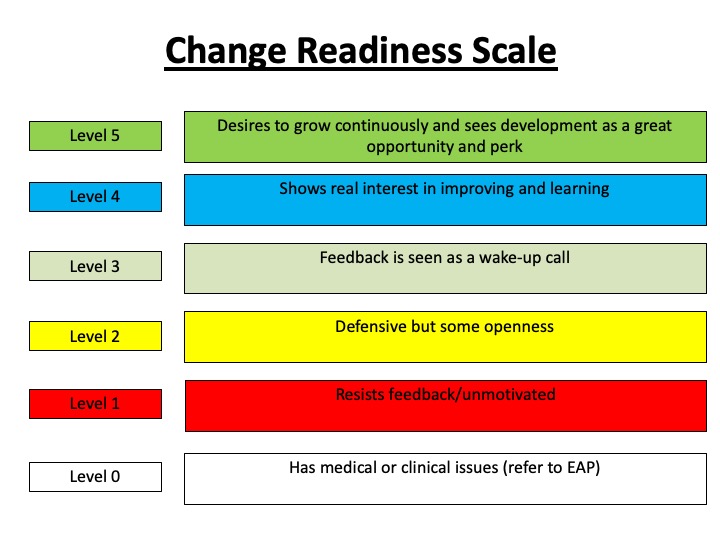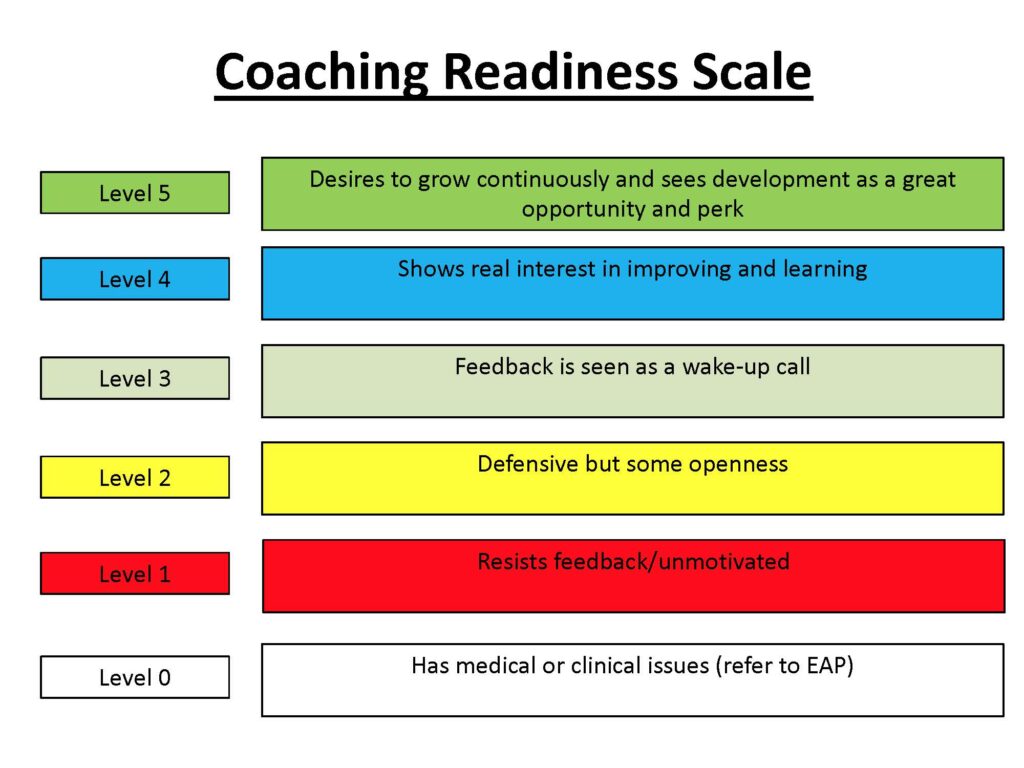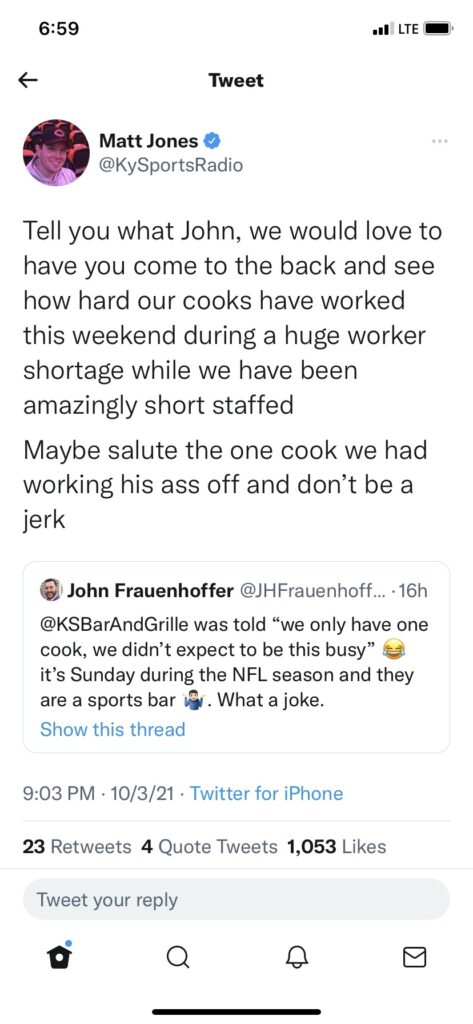There are two experts in every conversation. I know my intention, or what I want to communicate and in what way. However, the person I am talking to only knows how my message was received-its impact.
There is no better breeding ground for the worst of this than on social media. Recently, a local sports personality (Matt) was in a twitter argument with someone about being too negative during the first half of a recent Kentucky basketball game. I went and looked at Matt’s first half tweets during the game to see if he was being too negative, and I briefly got involved. It went downhill quick…here’s the play-by-play…
The first person (Hunter) tweeted at Matt, “I think there’s being negative and the tweets that I saw from some about this team may not make the tournament and Pope isn’t the answer. Being critical is fine. Acting like we are doomed for eternity is another thing.”
Matt’s tweet responded, “I said none of those things.”
I tweeted at Matt, “You tweeted 9 times during the first half of the Gonzaga game. 8 were negative.” I then got off my phone not thinking anything of it….until Matt replied to me…”If I had tweeted 8 positive tweets about a game where we were down 16 at half, I might need to be treated. You also left out my 28 positive 2nd half/OT tweets….but I am sure that was unintentional.”
Well, Matt had 321,000 followers (I had 417 at the time). Matt’s tweet got 115,000 impressions and I received 59 direct replies very quickly…in fact, the next time I looked at my phone I was like, “what is going on with my twitter account”? And I started scrolling through the replies….here’s the summary….26 were focused on the game and how positive or negative the first half was, those are not included here. The other 33 were directed toward me. How many do you think were positive? I’ll let you decide. For your entertainment, here they are verbatim:
“Retard.”
“You’re a nobody commenting bullshit. UK played like dogshit in the first half, what would you expect. What a clown you are.”
“If only we had some RealTime Coaching (RTC) to help out! I definitely need you to inform me on how to run my business! Let’s Go!”
“We were losing by 16, Ryan. What would you like him to say?”
“So what, who cares? UK fans had every right to be disappointed. Let us know what radio station you host, I want to dissect everything you say and do. You guys that criticize everything MJ says, are nothing but a bunch of losers that can’t stand to see someone else succeed.”
“Dude, BBN tweeted a million times during that half and 999,999 were negative. What are u trying to say?”
“Say you’re obsessed with politics without saying you’re obsessed with politics.”
“Who the hell would trust you to get their company in line if you are this childish?”
“I lost brain cells reading this tweet.”
“You have issues.”
“I bet you are a BLAST at parties. Good lord dude don’t you have better things to do, then count tweets and complain about them. I’ve found another one that would complain about something even if we won the national championship.”
“Your bio says you specialize in selection, yet you selected to tweet this. Hmmmmm?!?”
“You counted!!??? How sad….”
“I’m assuming you were jumping for joy in the first half!”
“City boy!”
“Ryan needs help.”
“So I am guessing you was happy with the first half.”
“Show me the doll where Matt hurt you.”
“Stop being a douche Ryan.”
“Any update Ryan?”
“What in the first half did you find orgasmic?”
“I don’t remember and media that I follow having any positive tweets in the first half. Why single out Matt? I could tell you but you already know.”
“We were playing pretty negatively, Einstein.”
“We won, stop.”
“What about the first half was positive? I guess you know showing up safely in Seattle should be looked at as a positive. Other that there was nothing sir.”
“Now do the other Kentucky media members who tweeted in the first half.”
“Brother we were down 16 at half. There wasn’t any positive to tweet.”
“Sounds like Matt has a third home. Living rent free in your head.”
“Ryan apparently has way too much time on his hands.”
“You folks got a real hard-on for Matt Jones. It really comes off petty.”
“Some of you people are pathetic. It’s jealousy most likely, it’s written all over your face. It’s sad, honestly.”
“You tweeted once here. Dumb.”
Last but not least, and my favorite, “You’re a baby back bitch.” My son and his buddies are now referring to each other as “Triple B’s”.
My intention was to add some data to the argument about Matt being too negative. My impact was not that. We laughed these off, but what about someone who genuinely makes a post or a comment they think is positive and they get feedback like this. Take star volleyball player Harper Murray. Here is an excerpt from Elizabeth Merrill’s ESPN article “Nebraska Volleyball Star Harper Murray Focuses on Healing” (August 27, 2024).
HARPER MURRAY DIDN’T want people to see her cry, so she escaped to the bathroom. She stood in front of a mirror and un-puffed her eyes. She wanted to kick a wall. Her No. 1 Nebraska volleyball team had just lost the national championship to Texas in straight sets, and now she was being summoned to a postgame news conference to deconstruct the whole debacle. Two Nebraska staffers walked in and tried to coax her to the dais.
“If I go in there,” she told them, “it’s not going to go well.”
Murray always considered herself a social person, but not on a night when she played, in her opinion, one of the worst matches of her life. She had nothing to say.
They assured her that her teammates would be there and that she didn’t have to answer any questions she didn’t want to, so she trudged to the front. And she was doing fine. Murray sat there blank-faced and mostly silent for 8½ minutes, fidgeting with her ear piercings, and then someone asked her about next year and she could contain herself no more.
“I think we’re going to win three national championships the next three years,” she said.
Murray’s teammate Rebekah Allick, seated two chairs over, loved it. “F— yeah,” she said on a hot mic. Murray’s mom, Sarah, heard about it on the walk from the arena to her hotel and was equally pumped: “There’s my girl!”
But it did not go over as well on social media. The next morning on the team’s flight back to Lincoln, Murray scrolled through her phone and read the trolls. They told her she should learn how to pass before she talked smack. Some of them said her late father would be disappointed in her. Others told her to kill herself.
“A lot of those comments on social media hurt so badly,” she said. “But why is that affecting me so much to the point where I hate volleyball, I hate myself, I hate everything around me, and I can’t find anything positive that’s going on in my life at all?”
She had no idea how much that match, and the backlash from those 13 words, would stalk her over the next six months.
She skipped class, got arrested for DUI, was caught shoplifting and was so despondent that at one point her family worried that she’d take her own life. She went to a psychiatric emergency room.
When a doctor there asked her how this downward spiral started, Murray recalled that December night in Tampa, Florida. She told him of the postgame prediction heard throughout the volleyball world. He had a hard time processing that she was attacked for saying something so benign, so he asked her to repeat what she said to those reporters again. He sat back in his chair. “That,” he said, “triggered that response?”
These stories are all too common and you may have your own similar social media story, so know you are not alone. What could you do about it?
#1. Minimize your social media exposure. If you need or want to be on social media, refrain from making any comments on anyone’s posts. If you are compelled to make a post, make it fact-based. It’s a mistake to make assumptions about someone you may or may not know.
#2. If you find yourself in a social media viral frenzy or a twitter-battle, rise above the clutter and refrain from responding. I had some real zingers I wanted to tweet back to those replies, but I knew that would be a losing proposition. Mark Twain said, “Never argue with an idiot. They will only bring you down to their level and beat you with experience.”
#3. From a leadership perspective, people can hear and interpret the same message differently. To be an effective leader, the ability to communicate your message so it is received in the way it was intended is a skill worth developing.
#4. Seek feedback and listen to how your messages are being heard by others. Sir John Whitmore said, “Awareness is curative.” Awareness is referring to self-awareness. It’s nearly impossible to lead others until you are able lead yourself.
Excerpts of this blog are from Bumper Sticker Leadership with the original quote attributed to a participant in a SMART Conversations workshop hosted by Weisman Consulting, Boston, Ma.





